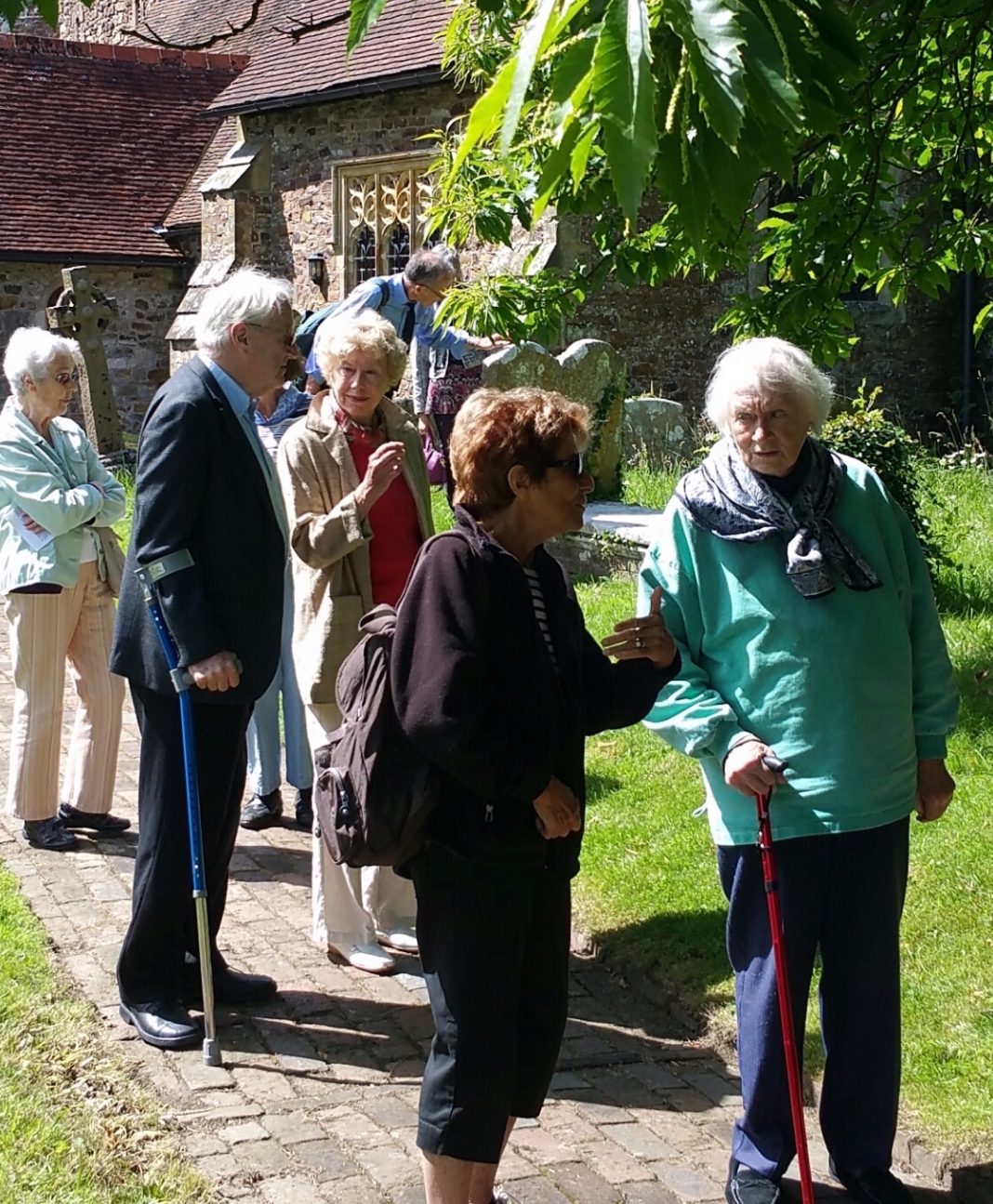With its membership interested in church architecture, each year the Friends of St Mary’s set off to visit two nearby churches and then take tea with a Women’s Institute. After some uncertain weather forecasts, over 30 Friends met on Saturday July 2 at the Station Approach in bright sunshine to board two Rye Community Transport buses. Chair of Friends, Anthony Kimber had planned the afternoon as a mystery tour!
Heading out of Rye on the Udimore Road, the elevated position of the bus seating provided superb views of the summer countryside. Udimore Church was the first stop. Sitting on an ancient site alongside a former defended manor house (Court Lodge), the latter had been removed lock stock and barrel in 1912 to a new position near Tunbridge Wells. Only some of the moat remains.
The Romans, garrisoned at Portus Lemanis near Hythe, used the area for salt panning as the valleys to the North and South of the Udimore were saline. They named the adjacent settlement, Cock Marling, Coquenaria Marliensis, the salt pans of Marling. The Domesday Book records a Saxon church and farmland at Udimore. Post Norman Conquest, a stone church was built, perhaps replacing the Saxon one, for one of William the Conqueror’s lieutenants, Count d’Eu, hence Eu-de-mer became Udimore. There are records of locals long passed. A floor brass records the final thoughts of Mr Freebody in 1612: “My turn today; yours tomorrow”! World wars took local men who are recorded on plaques: four on the Somme and several during WW2 including the two brothers Holmes.
After a wander in the graveyard, the buses headed off to travel one of the most rural and attractive country roads in the area from Udimore to Beckley. This route passes through ancient woodland and alongside Tudor iron furnaces, famous in their day for quality cannons. Alfred the Great referred to the Manor of Beccanleah (Becca’s clearing) in his will. Sir Reginald Fitzurse, one of the murderers of Sir Thomas a Beckett, having ridden to the church directly from Canterbury sought but was refused sanctuary here.
Entering the churchyard through an elaborately carved covered gate dedicated to fallen from WW1, the graveyard is bounded by ancient trees. The entrance step to the Church comprises a recycled coffin lid! Around the Tower there is herringbone brickwork typical of the Saxon period. The heart of the church dates from the late 1100s and has seen much change over the centuries, resulting in many interesting details, including an upper doorway to the former Rood Screen, an ancient alms chest (C12) and a former Georgian wine cooler font!
For a party from Rye there was interest in the fact that architect Sir Reginald Blomfield of Rye Point Hill had renovated the Nave in the late C19. His connection with the local Burra family had probably initiated the work, which involved the removal of some insecure upper galleries and the fitting of unusual Art Nouveau windows in the roof.
After Beckley there was some impetus to get back to the buses for the journey to Westfield Parish Hall. Here the ladies of the local WI had prepared a superb tea! We were not allowed to leave until it had been finished. The return to Rye in diminishing sunshine finished off an excellent afternoon. Thanks go to John Gurney, Gill and Paddy Harvey for their logistic arrangements, Lyn Nealon and Pat Hughes who drove the Community Transport buses and of course the Westfield WI for another memorable tea! https://www.facebook.com/FriendsOfStMarysChurchRye
Photo: Anthony Kimber



